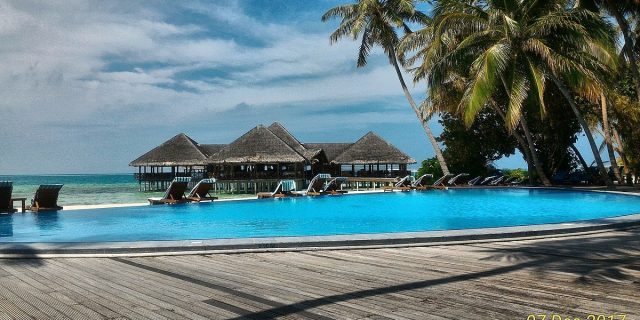08
Dec
Pesticide Use on Island Resorts Tied to Biodiversity Collapse

(Beyond Pesticides, December 8, 2021) The diversity, abundance, and richness of invertebrate species on oceanic islands declines as a result of pesticide use, urban development, and other human activities, finds research published recently in Royal Society Open Science. Oceanic islands, despite their small size, harbor 20% of all species, and 50% of endangered species, making conservation critically important in the context of a sixth mass extinction and insect apocalypse. As the study indicates, “Although agriculture is currently considered the predominant driver of the worldwide species decline, it is crucial to investigate and consider all human land uses for obtaining a global impact assessment, especially in regions where land use types other than agriculture are predominant.”
To determine the primary drivers of species declines on oceanic islands, researchers divided land use type into urban, tourist, and uninhabited. To provide a clean delineation between the various land uses, the study was carried out in the Republic of Maldives. Out of the roughly 1,200 Maldives Islands, researchers chose four uninhabited islands without any permanent human activity, four densely inhabited ‘urban’ islands comprised of Maldives residents, of four resort islands focused solely on tourism. Researchers applied a grid of 1 by 1 meter plots across a map of each island, and randomly picked 20 grids in which to conduct ground-based species sampling. Remote-sensing data were also utilized to determine vegetation cover.
Results show that, compared to uninhabited islands, urban islands contain roughly half the number of species, while tourist islands contain approximately one third. On urban islands, researchers attribute the disparity to habitat fragmentation, loss of habitat quality, and loss of natural vegetation cover. Specifically, activities involved in land reclamation and new construction projects were cited as being the major drivers of species decline on densely populated oceanic islands.
Data shows that a different factor is driving species declines on tourist islands. “In contrast with the urban development on the permanently inhabited islands, tourist facilities are interested in keeping much of the natural forest and shrub vegetation intact to conserve the image of a ‘tropical paradise’ for their guest,” the study notes. On tourist islands, natural vegetative cover remains mostly intact, and with most human development occurring in the resort area, habitat fragmentation was much lower than on urban islands. But tourist islands nonetheless display lower diversity indexes than urban islands. With increased occurrences of cosmetic landscaping, small gardens, golf courses, and other tourism-related activities, researchers thus attribute pesticide use as the driver of declines on tourist areas. Every tourist island studied indicates that they regularly apply insecticides, specifically synthetic pyrethroids like deltamethrin, in and around structures to manage common pests like mosquitoes, bedbugs, and cockroaches.
This research reveals that although agriculture is not occurring on these small oceanic islands, pesticide use can still be a significant driver of species decline. Pesticide use can directly and indirectly harm both terrestrial and aquatic species, including coral, as chemicals run off from land into the ocean. With nearly two million unique species inhabiting the ecosystems in and around oceanic islands, it is critical that these areas receive attention. As study co-author Sebastian Steibl told Mongabay, “You can make very effective conservation if you protect islands compared to other ecosystems.”
Tourists and vacationers are encouraged to ask the resorts and hotels they plan to stay at whether they use toxic pesticides as part of their management. The issue is a concern not only for ecological health; horror stories of families poisoned at resort facilities occur far too often for comfort.
Get involved today by urging action to address the sixth extinction. And for more information on the dangers pesticides pose to water quality, see Beyond Pesticides’ Contaminated Waters webpage.
All unattributed positions and opinions in this piece are those of Beyond Pesticides.
Source: Mongabay, Royal Society Open Source










